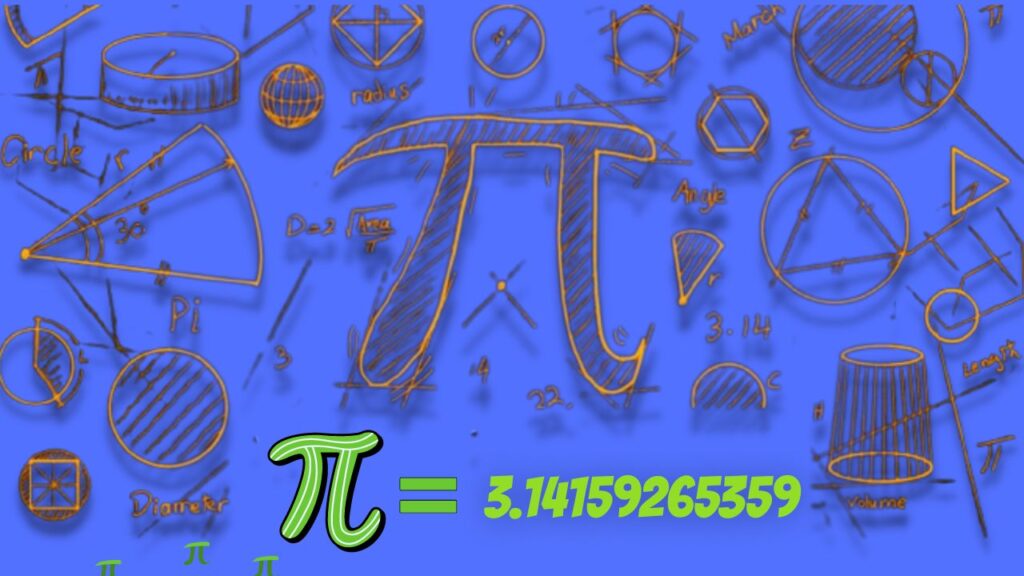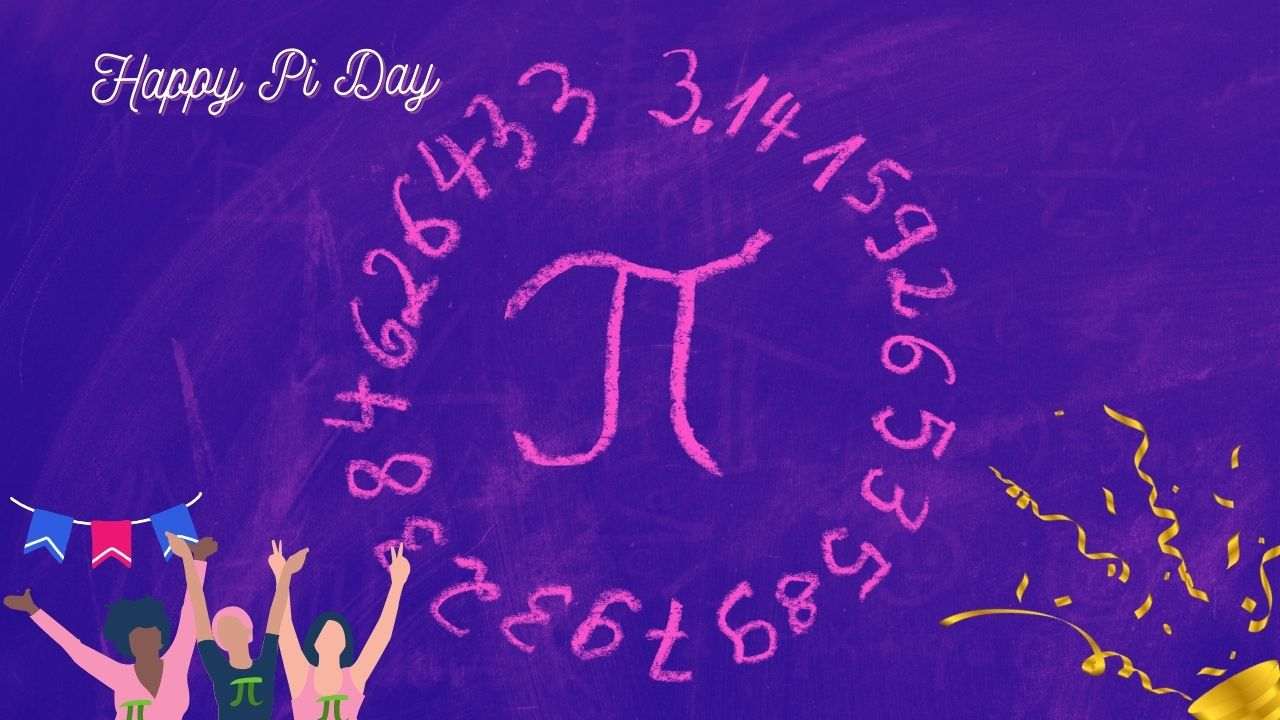Pi Day is an annual celebration held on March 14th (3/14) to honor the mathematical constant pi (π). The day is marked by math enthusiasts, educators, and students around the world to appreciate the significance of pi and its contribution to various fields, from science to engineering.
March 14th is a special day for mathematicians, scientists, and enthusiasts all over the world. It’s Pi Day, a celebration of the mathematical constant pi (π) which represents the ratio of the circumference of a circle to its diameter. This article delves into the history of pi, Indians’ contributions to the discovery of pi, and the significance of Pi Day.
Table of Contents
What is Pi?
Pi is an irrational number with a value of approximately 3.14159, which means it cannot be expressed as a simple fraction. It has been studied and used for thousands of years and has important applications in fields such as geometry, trigonometry, and calculus.
The Origin of Pi and its Discovery
Pi is a mathematical constant that represents the ratio of a circle’s circumference to its diameter. The value of pi is approximately 3.14159265359, which is an irrational number, meaning it cannot be expressed as a fraction.
The concept of pi dates back to ancient civilizations, with some records showing its calculation dating back to 1900 BC in Babylon. Ancient Egyptian and Chinese mathematicians also approximated pi value, and it was a topic of interest among many great mathematicians in history.
Although pi has been studied by many cultures throughout history, one of the earliest known approximations of pi comes from ancient India. The Indian mathematician and astronomer Aryabhata (476-550 CE) gave an approximate value of pi as 3.1416 in his treatise “Aryabhatiya.”
He used a geometric method to arrive at this value, which involved inscribing a circle with a regular hexagon and calculating the perimeter of the hexagon to estimate the circumference of the circle.
Indians’ Contribution to the Discovery of Pi

The discovery of pi is not attributed to a single mathematician, and many contributions were made over centuries. However, Indian mathematicians played a significant role in the discovery and approximation of pi. Indian mathematician, Aryabhata, approximated the value of pi to four decimal places in the fifth century, which was more accurate than the value used by European mathematicians for over 500 years.
Another Indian mathematician who made significant contributions to the study of pi was Madhava of Sangamagrama (c. 1350-1425 CE), who developed an infinite series for pi that was later rediscovered by European mathematicians. Madhava’s series allowed for the calculation of pi to a high degree of accuracy using only simple arithmetic operations, and it laid the groundwork for modern calculus.
Indian mathematicians like Madhava, Nilakantha, and others discovered new techniques and methods to calculate pi to higher accuracy, paving the way for modern calculus.
History of Pi
The history of pi can be traced back to ancient civilizations, such as the Egyptians, Babylonians, and Chinese. However, the first recorded approximation of pi dates back to the ancient Greek mathematician Archimedes, who used a polygonal approximation to determine the value of pi.
Throughout history, mathematicians have attempted to find more accurate approximations of pi, and the development of calculus in the 17th century allowed for even more precise calculations of pi. Today, computers have calculated pi to trillions of decimal places.
Pi Day Origins
The history of Pi Day dates back to 1988 when physicist Larry Shaw organized the first Pi Day celebration at the Exploratorium, a science museum in San Francisco. The idea was to celebrate pi and its importance to mathematics and science by holding a public event on March 14 (3/14). The event included pi-themed activities, such as a pi recitation contest and the serving of pies.
Pi Day was first celebrated on March 14th, 1988, in San Francisco. The date was chosen because it represents the first three digits of pi (3.14). The idea was proposed by physicist Larry Shaw, who worked at the Exploratorium, a science museum in San Francisco.
Since then, Pi Day has become a global phenomenon, with events and activities held in schools, universities, and museums around the world. Pi Day is a chance to celebrate mathematics and the important role it plays in our lives.
Celebrations on Pi Day
Pi Day is celebrated worldwide, and its significance extends beyond the world of mathematics. The day provides an opportunity for educators and students to learn and engage in fun activities related to pi. Some popular activities include pi recitation contests, pie-eating competitions, and math-related games. Businesses also participate in the celebrations by offering discounts on pies and other circular-shaped food items.
There are many ways to celebrate Pi Day, and people all over the world participate in different activities. Some popular ways to celebrate include:
- Eating pie: Many people enjoy eating pie, especially those with a circular shape, to celebrate Pi Day. Some people even bake pies with pi symbols on them.
- Memorizing digits of pi: Some people try to memorize as many digits of pi as they can. The world record for memorizing pi is currently held by Rajveer Meena, who memorized 70,000 digits in 2015.
- Pi-related activities: Many schools and museums hold Pi Day events, such as pi-themed scavenger hunts, pi recitation competitions, and pi-related experiments.
- Fundraising events: Pi Day is also a chance to raise money for charity. For example, some organizations hold pi-themed bake sales or sell pi-themed merchandise to raise funds.
Other Stories Related to Pi Day
Pi has had a significant impact on various fields of study, including science, engineering, and technology. It is used in calculating the circumference of planets and stars, designing bridges and buildings, and in the creation of computer graphics. The infinite and irrational nature of pi has also fascinated many mathematicians and philosophers, leading to numerous discussions and debates about its significance and properties.
Pi has also been the subject of many interesting stories and puzzles throughout history. One of the most famous is the story of William Jones, a Welsh mathematician who introduced the symbol π to represent the ratio of a circle’s circumference to its diameter in 1706. According to legend, Jones was inspired to use the Greek letter pi because it is the first letter of the Greek word for “periphery,” and he believed that it would be a fitting symbol for the circumference of a circle.
Another famous story involves the attempt to “square the circle,” which was a problem that fascinated mathematicians for centuries. The challenge was to construct a square with the same area as a given circle using only a compass and a straightedge. Despite the efforts of many great mathematicians, including Archimedes and Leonardo da Vinci, it was eventually proven that this was impossible.
Aside from its mathematical significance, pi has also inspired many interesting stories and myths. Here are some examples:
- The Indiana Pi Bill: In 1897, the Indiana House of Representatives passed a bill that attempted to change the value of pi to 3.2. The bill was eventually rejected after mathematicians pointed out its flaws.
- Pi in literature: Pi has been referenced in many works of literature, including the novel “Life of Pi” by Yann Martel and the poem “The Love Song of J. Alfred Prufrock” by T.S. Eliot. Pi has also been used in art and literature to represent mathematical concepts and to inspire creative expression. One of the most famous examples is the poem “The Raven” by Edgar Allan Poe, in which the narrator asks the titular bird a series of questions, including “What is the meaning of the word ‘Nevermore’?” The answer to this question, according to Poe, is pi, which represents the idea of something that goes on forever without repeating.
- Pi in pop culture: Pi has been referenced in many movies, TV shows, and songs, including the movie “Pi” directed by Darren Aronofsky and the song “American Pie” by Don McLean.
What are Some Special Deals or Discounts for Pi Day in 2024?
Some special deals and discounts for Pi Day include:
- 7-Eleven: 7Rewards and Speedy Rewards members can get any whole pizza for $3.14 at participating 7-Eleven, Speedway, and Stripes locations. The offer is limited to two pizzas per customer.
- Blaze Pizza: Diners can enjoy any one 11-inch pizza for $3.14 (excluding crust upgrades) when they download the Blaze Pizza app.
- Casey’s: Customers can take $3.14 off any large pizza at Casey’s on Pi Day. Additionally, playing Rewards Match-up on the app offers a chance to win freebies until April 7.
- Cicis: Dine-in customers at Cicis can get $3.14 off an adult buffet and a kids’ combo for $3.14. For online orders, a large one-topping pizza is available for $3.14 with the code PIDAY.
- Jet’s Pizza: Online orders at Jet’s Pizza receive a 20% discount on all menu-priced pizzas with the code 314DAY for both pick-up and delivery.
- Marco’s Pizza: Customers buying any large or extra-large pizza at regular price can get a free Pizzoli by using the code” FPMPP” online or through the Marco’s Pizza app.
These are just a few examples of the deals and discounts available on Pi Day, offering opportunities to enjoy discounted or free pizza in celebration of this mathematical holiday.
FAQs About Pi Day
What is the significance of the pi symbol?
The pi symbol (π) is a Greek letter used to represent the mathematical constant pi.
Why is pi an irrational number?
Pi is an irrational number because it cannot be expressed as a finite decimal or a fraction.
How accurate is the value of pi?
The value of pi is an infinite decimal and cannot be calculated with absolute precision. However, with the use of advanced algorithms, pi has been calculated to over 31 trillion digits.
How did Pi Day originate?
Pi Day was first celebrated in 1988 by physicist Larry Shaw at the Exploratorium in San Francisco, California. The day was chosen as March 14th (3/14) because it represents the first three digits of pi.
What are some ways to celebrate Pi Day?
Some popular ways to celebrate Pi Day include pi recitation contests, baking pies, and participating in math-related games and activities.
Conclusion
In conclusion, Pi Day is a celebration of the mathematical constant pi (π) and its importance to mathematics, science, engineering, and art. Pi has been studied and used by many cultures throughout history, including ancient India, and has been the subject of many interesting stories and puzzles.
Indians have played a significant role in the discovery and approximation of pi, and the day provides an opportunity for fun and engaging activities related to math.
The fascination with pi’s properties and significance has led to numerous discussions and debates, making it an exciting and ever-evolving topic of Pi Day provides an opportunity for people around the world to come together and appreciate the beauty and complexity of mathematics.

